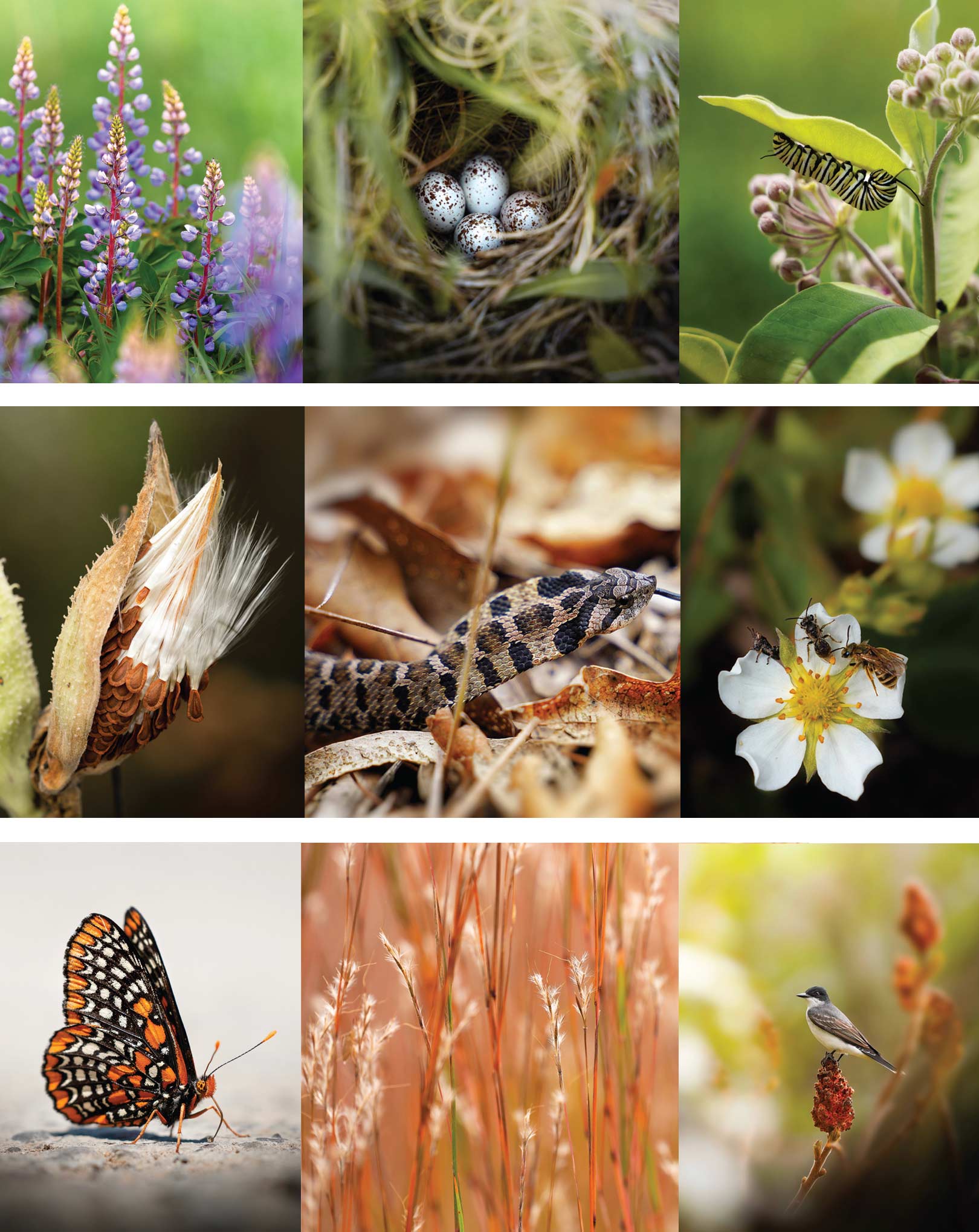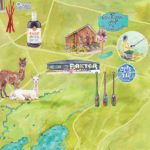
On an unassuming piece of land hemmed in by two busy highways, nature is regenerating a crucial component of Northumberland’s ecosystem.
At the meeting of Highway 30 and County Road 35 in Trent Hills lies a 38-hectare property that could be one of the most valuable pieces of land in the county. Although there are no houses or buildings here on the Mary West Nature Reserve, these open fields, separated by hedgerows and tufts of woodland, are home to some very notable residents.
“The mottled duskywing butterfly, birds like the wood thrush and eastern whip-poor-will, and snapping turtles are ‘at risk’ species that depend on the ecosystem on the property for survival,” says Val Deziel, Conservation Biologist for the Nature Conservancy of Canada (NCC), Central Ontario-East. “This area is also unique, because it’s home to globally rare plant communities such as tallgrass prairie and oak savanna. We hope that by restoring the agricultural fields into a ‘seed orchard’ we can both benefit this area and help to support the local restoration efforts throughout the Rice Lake Plains.”
If they are unchecked, invasive trees like the Scotch pine encroach upon the fast dwindling pockets of tall grass plains and native plant meadows that are so vital to our area.
Deziel is part of a team at the NCC that has been working for more than ten years in the Northumberland County area to manage and monitor hundreds of hectares of land and water, which includes areas like the Mary West Nature Reserve. Since 1991, when the land was entrusted to the NCC and Lower Trent Conservation Authority, the team has been busy eradicating invasive species, conducting prescribed burns and thinning out the woodlands.
“It looks pretty messy when you start – a bit of mass destruction!” says Chelsea Marcantonio, Assistant Conservation Biologist at the NCC, Central Ontario-East. “People see us clearcutting trees and burning fields, but it’s all part of a larger plan to restore the tall grass species and native wildflowers that support the wildlife.”
Deziel and Marcantonio explain that if they are unchecked, invasive trees like the Scotch pine encroach upon the fast dwindling pockets of tall grass plains and native plant meadows that are so vital to our area (less than two percent of native grasslands remain in Ontario). Grasslands have also proven to be more effective than forests at locking away harmful CO2 from our atmosphere. Unlike forests – which re-release harmful CO2 back into the air when they are harvested or when they burn in forest fires – grasslands are able to lock carbon in their extensive root systems even if they are cut or burned.
To re-establish these landscapes, however, large amounts of seed are required, and Canada is currently in the grip of a native seed shortage, according to the World Wildlife Fund Canada (WWF), which is working with organizations like the NCC and Indigenous-led projects in priority areas.
“These grasses and wildflowers grew in our area before, so given a chance, they will do well again. Unfortunately we are experiencing a seed shortage, when we need a seed avalanche to grow these areas,” says Marcantonio.
To get the “avalanche” of seeds they needed, the NCC decided to start a seed orchard. “The Mary West property is a perfect location for the seed orchard,” explains Deziel. “The former crop fields are open, accessible areas that we can seed densely with native wildflowers and grasses. We start the seed orchard from a limited number of harvested wild seeds (so as not to disrupt wild populations and habitats) and hopefully generate enough seeds for other local restoration projects. The whole process is carefully monitored.”
Although the Mary West Seed Orchard is not unique to conservation efforts in Ontario, this resource is of particular importance to the NCC.
“Few properties owned by NCC are as close to a town centre as Mary West,” says Deziel. “This presents us with an exciting opportunity to connect with our local community. We invite Campbellford school groups, and we are partnering with the Westben Theatre to inspire youth to get involved in our conservation efforts.”
“It seemed natural to us to collaborate with the NCC,” says Donna Bennett, Marketing and Advancement Director for the Westben Centre for Connection and Creativity through Music, which is located right across the road from the Mary West Nature Reserve.
Working with musicians, singers and sound engineers, Westben launched “Sounds in Nature”, a series of initiatives that combined musical performances, sound installations and even a community sound garden project, in partnership with the Mary West Nature Reserve.
“When we first moved here, our neighbours told us stories about Mary and how passionate she was about the land,” Bennett recalls. “We wanted to create an experience that enhanced the natural beauty of the site and created a sense of wellness that Mary loved so much about this place.”
Mary Margaret West was the last member of her family to hold the West name. Her great-grandfather first immigrated to Canada from Ireland and settled in Seymour Township in the mid-1800s. Even though she left to attend Osgoode Law School, later becoming a corporate lawyer for Ontario Hydro, she returned frequently to spend time at the farm estate and was often seen walking the trails on the property when she was home for the holidays.
“Few properties owned by NCC are as close to a town centre as Mary West. This presents us with an exciting opportunity to connect with our local community.” VAL DEZIEL
The NCC has just completed a crushed limestone accessible trail and parking area to encourage the community to participate in planting initiatives and raise awareness about the restoration efforts. “The trail is a key part of the project because it will allow visitors and volunteers of all abilities to experience and help out at the seed orchard,” comments Deziel.
She goes on to say: “It’s incredible to see how resilient nature is. The youth that have come out here with their schools come back on their own to help us plant. We understand that it’s a long-term commitment that needs continued support. Restoration is an investment that always pays off.”
“When you see fields of wild lupine, columbine, New Jersey tea, and purple blazing star flowers with monarch butterflies, and chance upon a nesting grasshopper sparrow – it’s thrilling,” says Chelsea Marcantonio.
Story by:
Micol Marotti
Photography by:
Chelsea Marcantonio




